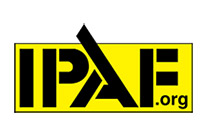These Are The Reasons That Fibre Optic Cables Beat Copper
22nd February 2023
Fibre optic cables are the go-to for any IT professional looking to build a network that involves any lengthy data sharing or high speeds. Before we go into why fibre optic is simply the best, first it’s important to understand the differences between the two.

The difference between fibre optic and copper cabling
Copper is made up of metal strands. Electrical pulses move through these metal strands to transmit data. Fibre optic cables are made up of flexible glass threads.
Here are the reasons why IT experts and novices all should opt for fibre:
Faster Transmission
How many things have travelled faster than the speed of light? Well, the answer is nothing – but fibre gets pretty darn close. Data moves along the glass fibre cables close to the speed of light, whereas copper maxes out at a measly 40Gbps (gigabytes per second).
We actually don’t know how fast data can travel, but experts predict most fibre connections offer speeds as fast as 44tbps (terabytes per second). For context, one terabyte equates to 1 million megabits.
Save on Space
It’s a well-known fact that fibre cables are roughly the width of a human hair. Even with their protective sheathing, they will still be around 75% thinner than copper cables, and carry more data to boot.
It’s not just the aesthetics that make this smaller size desirable. Reduced mass in cabling means a data centre can distribute cool air more evenly. It also makes cables easier to access when performing maintenance operations. And, of course, it looks a lot more pleasing to the eye.
Greater Distances Covered
Fibre optic cabling covers greater distances than copper. Fact. Copper cables are limited to smaller lengths. Greater lengths are possible but come with other issues which prevent copper being reliable at long distances.
Fibre optic cabling is not bound by governing standards and can simply go further. Try 100km to a copper’s limit of 100m! That’s around 60 miles of data that can be shared down one cable at the speed of light.
Fibre cables can be connected further but need equipment huts above ground to bridge them together. For example, on a long distance line there will be an equipment hut every 40 to 60 miles. The hut picks up the signal and retransmits it down the next section, without compromising on strength.
However, both types suffer from attenuation, or weakening of the waveform signal when put to long distance tests.
In it for the Long Haul
A well-installed fibre structure will last for many years, with no compromise on increased bandwidth demands. Copper, unfortunately, has a shelf life of around five years.
As the amount of data we need grows, bandwidth requirements grow with them. This means fibre is future proof, as it will be able to operate at future speeds without needing a full cable replacement.

We understand that choosing the right cabling for your network can be overwhelming, with all the different terms, acronyms and technical information.
Ultimately, it comes down to balancing the best performance with the best value. Our reliable, experienced team of industry experts will be able to advise you on exactly what level of shielding you need for your network cabling.
Get in touch to discuss your needs.
To share this post please choose your platform!
Contact C-Tech Solutions
If you’re looking for an experienced and reliable partner with considerable expertise in network infrastructure, fibre-optics, copper cabling and all related building services then we invite you to reach out to our team.
See why a growing number of organisations trust C-Tech as their preferred supplier.































